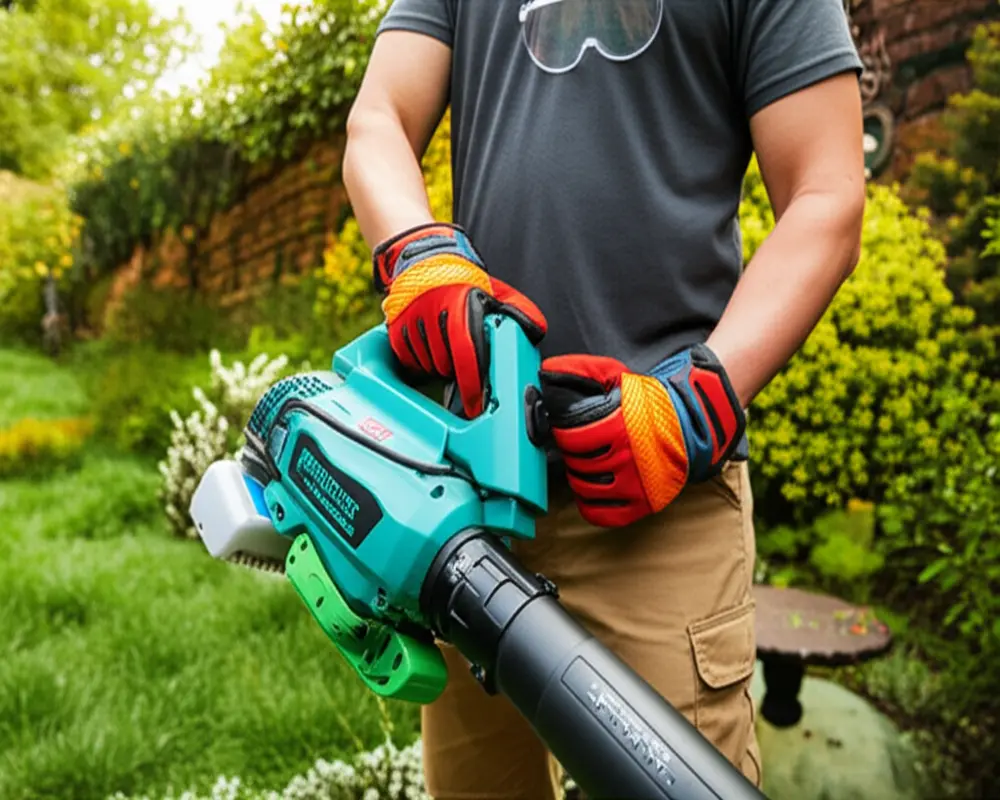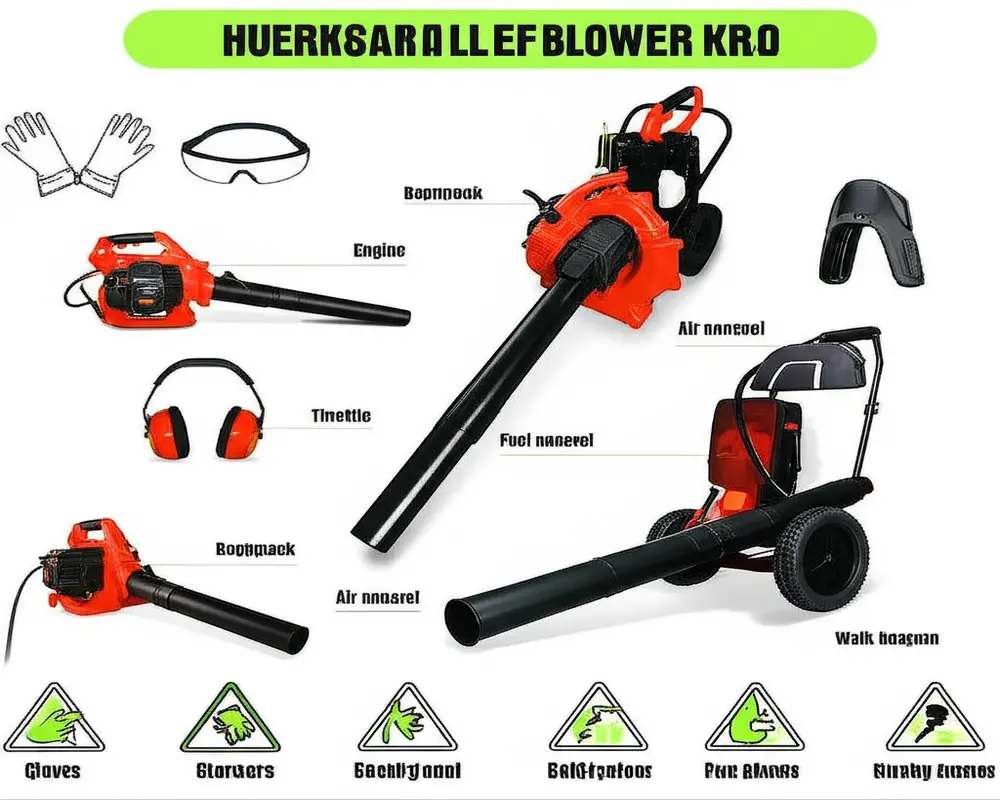How to Use a Leaf Blower: Complete 2025 Guide for Efficient Yard Cleaning
A leaf blower is a powerful gardening tool designed to move debris, primarily leaves, from lawns, driveways, and other outdoor areas quickly and efficiently. Whether clearing fallen leaves in autumn or tidying up after yard work, mastering how to use a leaf blower properly enhances your yard maintenance routine, saving time and effort.
Using a leaf blower effectively involves more than just pointing and blowing leaves away. Proper techniques, safety measures, regular maintenance, and troubleshooting are essential to maximize efficiency, protect yourself, and extend the tool's lifespan. This comprehensive guide covers everything you need to know about leaf blowers in 2025—from safety essentials and types to advanced tips and care.
I. Introduction: Master Your Leaf Blower for a Cleaner Yard
Leaf blowers are versatile outdoor power equipment primarily used for clearing leaves, grass clippings, and light debris from yards, patios, and walkways. They come in various models and power sources, including electric, battery-powered, and gas-powered options. Using the right blower and the correct techniques ensures your yard remains tidy without unnecessary strain or damage.
This guide presents a step-by-step approach to safely and efficiently use your leaf blower. We cover crucial safety precautions, detailed operation instructions, maintenance tips, troubleshooting advice, and professional practices to help you achieve spotless outdoor spaces with confidence.
II. Prioritizing Safety: Essential Precautions Before You Begin
Before operating any leaf blower, safety must be your top priority. Protective gear shields you from flying debris, loud noise, and potential accidents during use.
Wear personal protective equipment (PPE) such as safety glasses or goggles to protect your eyes, ear protection like earmuffs or plugs to guard against noise, sturdy gloves for hand safety, and appropriate clothing that covers your arms and legs to prevent scratches and insect bites.

Conduct a thorough pre-operation check: inspect the blower for any damage, verify that guards and covers are securely in place, check fuel levels or battery charge, and clear the work area of obstacles like stones, toys, or loose branches that might become hazardous projectiles.
Choose a safe operating environment by maintaining a safe distance from people and pets. Avoid using the blower near open windows, vehicles, or fragile objects. Be mindful of wind direction and speed, as strong winds can blow debris unpredictably. Never operate a leaf blower on steep slopes or unstable surfaces.
For detailed safety standards, refer to the EPA Leaf Blower Safety Guidelines and OSHA Power Equipment Safety Standards.
III. Understanding Your Leaf Blower: Types, Components & Modes
Leaf blowers come in three primary types based on their power source:
Electric (corded) blowers require a power outlet and are ideal for small to medium yards due to their lightweight and low noise levels. Battery-powered (cordless) blowers offer greater mobility without the hassle of cords but require battery charging. Gas-powered blowers, available as handheld or backpack models, deliver the highest power and are suited for large areas or heavy-duty tasks but involve more maintenance.

Key components include nozzles that direct airflow, throttle controls for speed adjustment, starters (pull cord for gas models or buttons for electric), fuel tanks or battery compartments, and sometimes vacuum/mulcher attachments.
Some leaf blowers have dual functions capable of vacuuming leaves and mulching them into finer pieces, which can be beneficial for composting or reducing waste volume.
IV. Step-by-Step Operation Guide: From Start to Stop
A. Pre-Starting Preparations
Begin by assembling your leaf blower according to the manufacturer's instructions. For gas-powered models, mix fuel as specified, usually gasoline with a specific oil ratio. Charge batteries fully for cordless models and ensure electric models are connected properly to power sources.
B. Starting Procedure
For gas blowers, place the blower on a flat surface, set the choke if applicable, pull the starter cord firmly until the engine fires, then adjust the choke to idle. For electric models, simply switch on the power button or pull the trigger after plugging in or inserting the battery.
C. Effective Blowing Techniques
Maintain a comfortable grip and stance with feet shoulder-width apart for balance. Use sweeping motions, moving the nozzle side to side in smooth arcs to gather leaves into piles. Start from the edges of the lawn and work inward to avoid scattering debris. Create manageable piles for easy collection or mulching.

Adjust your technique based on leaf conditions; damp leaves may require more deliberate movement, while dry leaves blow easily. Use the blower's low setting near delicate plants or structures to prevent damage.
D. Vacuum and Mulching Functions
If your blower includes vacuum and mulching modes, convert it as per the manual's guidance. Vacuum leaves by positioning the intake close to the ground, and mulch them to reduce volume and prepare for composting. Mulching benefits include faster decomposition and reduced disposal needs.
E. Stopping the Leaf Blower
Turn off the blower by switching off the power button for electric models or setting the engine stop switch to off for gas models. Allow the engine to cool before storing, especially for gas-powered equipment.
V. Basic Maintenance & Post-Use Care for Longevity
After each use, clean the blower by removing debris from the nozzle and air vents. For gas models, regularly inspect and replace the air filter and spark plug, and store fuel safely in approved containers. For battery-powered models, follow battery care guidelines such as avoiding complete discharge and storing batteries in a cool, dry place.
Proper storage involves keeping the blower in a dry, sheltered space away from extreme temperatures. Periodic professional servicing can prolong the tool’s life and maintain performance.
VI. Troubleshooting Common Issues
Common issues include failure to start, loss of power, smoke emission, clogging, and unusual noises. Troubleshoot by checking fuel quality, battery charge, spark plug condition, and air filter cleanliness. Clear any blockages in the nozzle or vacuum tubes. For persistent problems, consult the user manual or a qualified technician.
VII. Advanced Tips & Professional Efficiency
Optimize leaf blowing by choosing the right time of day—early morning or late afternoon—to avoid strong winds and minimize dust. Manage noise levels by operating at lower speeds where possible and respecting neighborly quiet hours.
Adopt environmentally-friendly practices like mulching leaves to enrich your garden soil and composting organic debris. This approach reduces waste and supports sustainable yard care.
VIII. Frequently Asked Questions (FAQ)
- Q: How close should I hold the leaf blower to the ground?
A: Maintain 6 to 12 inches (15 to 30 centimeters) above the surface for effective leaf movement without scattering debris excessively. - Q: Can I use a leaf blower in wet conditions?
A: Avoid using leaf blowers on wet leaves as they are heavier and may clog the equipment or reduce effectiveness. - Q: How often should I service my gas-powered leaf blower?
A: Perform basic maintenance like cleaning the air filter monthly during the season, and a full service annually or after 25 hours of use. - Q: Is it better to choose a gas or electric leaf blower?
A: Gas blowers offer more power for large areas, while electric models are quieter and easier to maintain for smaller yards. - Q: How do I safely dispose of mulched leaves?
A: Use mulched leaves as compost material or mulch around plants to retain moisture and enrich soil nutrients.
IX. Conclusion: Your Path to a Tidy Yard, Safely & Efficiently
Learning how to use a leaf blower properly combines understanding the equipment, applying safe operation practices, adopting effective techniques, and performing regular maintenance. This knowledge ensures efficient yard cleaning, protects your health and property, and extends the life of your tool.
Embrace responsible leaf blower use to maintain a clean, attractive outdoor space throughout the seasons. With this guide, you are equipped to operate your leaf blower confidently and sustainably in 2025 and beyond.
For further insights on garden tools and maintenance, explore our detailed reviews and guides on related equipment like hand cultivators and pruning shears.

